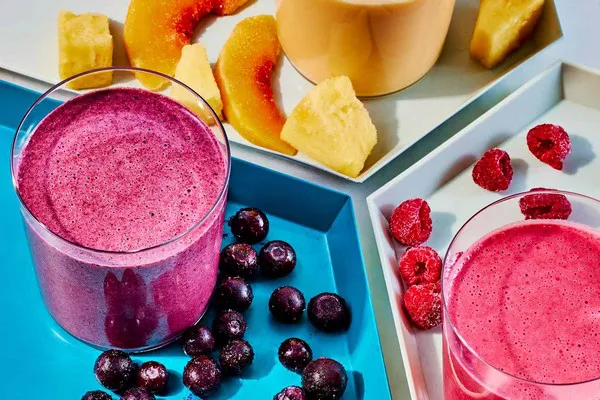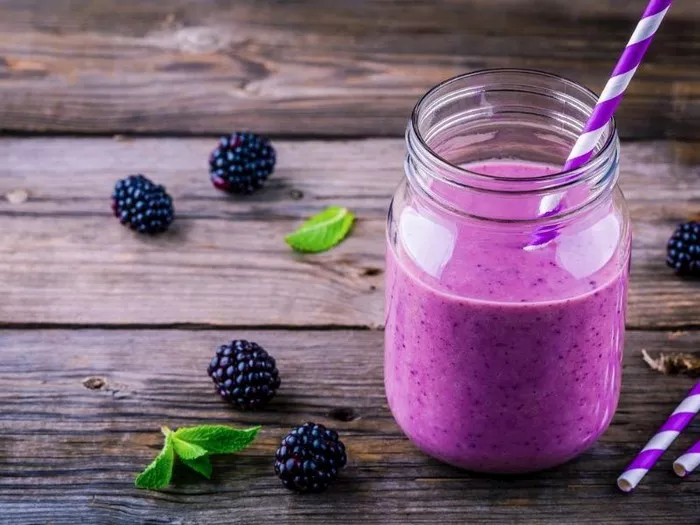In today’s fast-paced world, smoothies have emerged as a popular and convenient option for those seeking a nutritious meal or snack on the go. They are often perceived as a healthy alternative to sugary drinks and fast food, packed with fruits, vegetables, and sometimes even protein powders. But are smoothies truly good for you? To answer this question comprehensively, let’s delve into various aspects of smoothies, examining their nutritional benefits, potential drawbacks, and how to make the most healthful choices.
Nutritional Benefits of Smoothies
Rich in Vitamins and Minerals
Smoothies are typically made with a blend of fruits and vegetables, which are natural repositories of essential vitamins and minerals. For instance, berries like blueberries and strawberries are rich in antioxidants, vitamins C and K, and dietary fiber. Leafy greens like spinach and kale offer iron, calcium, vitamins A and K, and numerous antioxidants. By consuming a smoothie, you can easily incorporate multiple servings of fruits and vegetables into your diet, ensuring a broad spectrum of nutrients.
High in Fiber
Fiber is a crucial component of a healthy diet, aiding in digestion, maintaining blood sugar levels, and promoting heart health. Whole fruits and vegetables, when included in smoothies, contribute their natural fiber content. While blending does break down some of the fiber, it’s still a better option than consuming fruit juices, which lack fiber entirely.
Customizable and Versatile
One of the greatest advantages of smoothies is their versatility. You can customize them to suit your taste preferences and dietary needs. Whether you’re vegan, vegetarian, or following a specific diet plan like keto or paleo, there’s a smoothie recipe for you. Adding ingredients like Greek yogurt, chia seeds, flaxseeds, or protein powder can boost the protein content, making them a satisfying meal replacement.
Hydration
Staying hydrated is vital for overall health, and smoothies can be a refreshing way to meet your fluid needs. Made primarily with water-rich fruits and vegetables, smoothies contribute to your daily water intake, especially during hot weather or when engaging in physical activities.
Potential Drawbacks of Smoothies
High Sugar Content
While fruits are naturally sweet and packed with nutrients, they also contain sugar. Blending fruits releases their natural sugars more quickly, which can cause a spike in blood sugar levels, especially for individuals with diabetes or insulin resistance. Additionally, some smoothie shops and recipes may include added sugars or high-sugar ingredients like honey, maple syrup, or dried fruits, further increasing the sugar content.
Lack of Satiety
Liquid calories don’t provide the same sense of fullness as solid food. Smoothies, being primarily liquid, may not satisfy hunger as well as a meal with whole foods like lean proteins, whole grains, and healthy fats. This can lead to overeating later or choosing unhealthy snacks to combat hunger.
Calorie Density
Depending on the ingredients, smoothies can be quite calorie-dense. Adding high-calorie items like nut butters, avocado, or dairy products can quickly elevate the calorie count, making it challenging to fit them into a calorie-controlled diet.
Overprocessed Ingredients
Commercially prepared smoothies often contain processed ingredients, artificial sweeteners, and added preservatives to enhance taste and extend shelf life. These additives can negate the health benefits of the fresh produce, making such smoothies less desirable.
How to Make Healthful Smoothie Choices
Balance Your Ingredients
Strive for a balanced smoothie by incorporating a variety of fruits, vegetables, and some form of protein and healthy fats. For example, blend spinach, frozen berries, banana, and a scoop of protein powder with almond milk. This combination ensures a good mix of vitamins, minerals, fiber, protein, and healthy fats.
Mind the Portion Size
Smoothies can be deceivingly large in portion size, especially when purchased from a smoothie shop. Be mindful of portion sizes and consider splitting a large smoothie with someone or saving half for later. Aim for a smoothie that’s around 16 ounces, which is generally a reasonable serving size.
Watch the Sugar
Limit the amount of added sugars and high-sugar fruits in your smoothies. Opt for lower-sugar fruits like berries and citrus instead of bananas, mangoes, or pineapples, which are higher in natural sugars. If you need sweetness, use a small amount of a natural sweetener like a date or a tiny bit of honey.
Use Whole Ingredients
Prioritize whole ingredients over processed ones. Fresh or frozen fruits and vegetables are always better than canned or juiced versions. Avoid smoothie kits or mixes that contain artificial ingredients, and instead, prepare your smoothies from scratch.
Experiment with Non-Dairy Options
If you’re looking to reduce calories or are vegan, experiment with non-dairy milk alternatives like almond milk, oat milk, or coconut milk. These options are often lower in calories and fats compared to dairy milk and can add a unique flavor to your smoothies.
Add Superfoods
Boost the nutritional profile of your smoothies by incorporating superfoods like chia seeds, flaxseeds, hemp seeds, or acai berries. These ingredients are packed with nutrients, fiber, and healthy fats, making your smoothie even more nutritious.
Be Mindful of Smoothie Shops
When purchasing smoothies from a shop, read the ingredient lists carefully or ask for customizations. Many shops offer customizable options, allowing you to control the sugar content, portion size, and ingredients. Avoid smoothies that list syrups, sugars, or artificial additives as ingredients.
Smoothies as Part of a Balanced Diet
Smoothies can absolutely be part of a healthy diet, but they should not replace whole foods entirely. Think of smoothies as a convenient way to sneak in extra nutrients or as a meal replacement when you’re on the go. They’re particularly useful for breakfast, post-workout recovery, or as a snack between meals.
To maintain a balanced diet, ensure that your smoothie consumption is complemented by a variety of whole foods, including lean proteins, whole grains, healthy fats, and a diverse range of fruits and vegetables. This approach ensures that you get a broad spectrum of nutrients, fiber, and the satiety that solid foods provide.
Conclusion
In conclusion, smoothies can indeed be good for you, but it largely depends on the ingredients and how they fit into your overall diet. By focusing on balanced, whole ingredients, watching portion sizes, and being mindful of sugar content, you can create nutritious and satisfying smoothies that contribute to your health goals. Remember, smoothies are a tool, not a diet. Use them wisely, and they can be a delightful and nutritious addition to your daily routine. Happy blending!
Related Topics:

























